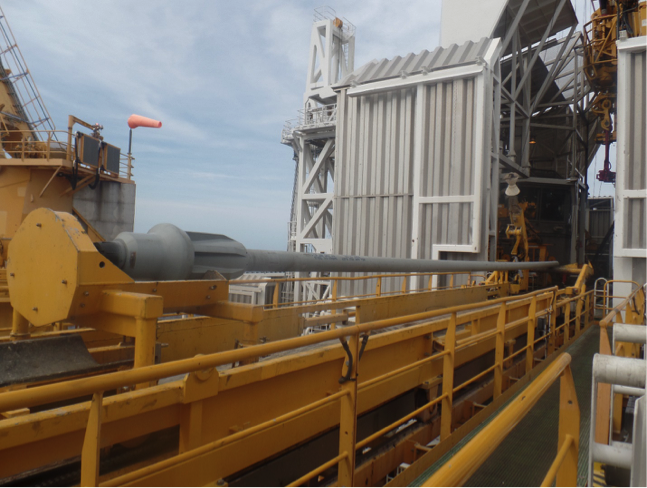On April 20, 2010—a date many in the petroleum industry know all too well—the unthinkable happened. Just 64 km (40 miles) southeast of the Louisiana coast, a sudden explosion and subsequent fire on the Deepwater Horizon drilling unit in the Macondo prospect resulted in the deaths of 11 workers and caused a massive oil spill in the Gulf of Mexico (GoM) that is still considered to be the largest environmental disaster in U.S. history. While an extensive investigation sited multiple issues of concern related to the Macondo incident, failure of the rig’s BOP equipment in particular contributed significantly to the magnitude of the spill.
Post-Macondo regulatory climate
The U.S. Department of the Interior and the Bureau of Safety and Environmental Enforcement established new protocols that require operators to test the integrity of their BOP equipment every 14 days. In short, the new rule stipulates:
- Operators must pressure-test the BOP system when installed and before 14 days have elapsed since the last BOP pressure test. Specifically, operators must begin to test the BOP system before 12 a.m. on the 14th day following the conclusion of the previous test. However, the district manager might require testing every seven days if conditions or BOP performance warrant;
- When testing the BOP system, operators must conduct a low-pressure and a high-pressure test for each BOP component. Each individual pressure test must hold pressure long enough to demonstrate that the tested component( s) holds the required pressure. The district manager might approve or require other test pressures or practices;
- Each test must hold the required pressure for five minutes. If the equipment does not hold the required pressure during a test, operators must remedy the problem and retest the affected component(s) before resuming drilling operations; and
- Among additional BOP testing requirements, operators must also pressure-test variable bore-pipe rams against all sizes of pipe in use, excluding drillcollars and bottomhole tools.
Stricter BOP testing protocols promise to help detect potential problems before they present a danger to rig workers or the environment, and thus they are essential for a rig’s safety and ultimate success. However, depending on the depth of a well, BOP testing takes on average between 24 hours and 60 hours each time the test is conducted. That means that every 14 days a rig experiences two days (or more) of idle time. All the while the operator continues to pay the daily rental rates for equipment and crews despite the temporary interruption in operations. Those fees can run into the thousands if not hundreds of thousands of dollars every day.
If oil prices were still hovering near $100/bbl, the cost of stricter federal regulation might not feel so burdensome, but in today’s environment savvy operators are looking for innovative ways to reduce drilling costs while still keeping risk management and rig safety a priority.
Success through collaboration
Nearly two years ago a large offshore operator joined forces with Samoco Oil Tools to develop OneTrip, a new BOP testing tool. Because standard BOP testing procedures require that three separately staged subtests be conducted on the rig’s BOP each time the equipment is tested, most testing tools typically run multiple trips along the BOP stack. Tripping times can be lengthy and costly, especially for deepwater wells with high-cost drilling units.
One expert drilling engineer estimated that running a testing tool a single trip from the rig floor to the BOP takes an average of 12 hours to 14 hours for a round trip. Consider a rig with a daily spread rate of $1 million to $1.2 million, and it becomes obvious why reducing tripping time is essential to substantially reducing the cost associated with BOP testing.

Unlike conventional testing tools, OneTrip’s proprietary telescopic design enables testing of the BOP’s large ram, small ram and shearing capabilities with only one trip down the hole, eliminating the need for multiple trips along the stack and reducing a rig’s idle time by a minimum of 50%.
Initially developed for the operator’s rig in the GoM and successfully field-tested on a well off the coast of Nova Scotia, the testing tool promises to set a new industry standard for BOP testing. The universal design of the tool ensures that it can perform with any BOP stack configuration. The Samoco team need only customize the tool’s dimensions for a rig’s precise drillpipe specifications. The tool is designed and validated to withstand 25,000 psi and is verified to sustain a load up to 1.2 million pounds downhole while testing. The low-torque, high-pressure design of the tool ensures a resilient downhole seal even when drilling in challenging subsea environments.
OneTrip can remain downhole until BOP test results are confirmed satisfactory, so if for any reason initial results are not satisfactory, the tool is positioned to immediately reconnect and retest the BOP. The tool will be available commercially starting early first-quarter 2017.

Recommended Reading
SM Energy Adds Petroleum Engineer Ashwin Venkatraman to Board
2024-12-04 - SM Energy Co. has appointed Ashwin Venkatraman to its board of directors as an independent director and member of the audit committee.
Baker Hughes Wins Contracts for Woodside’s Louisiana LNG Project
2024-12-30 - Bechtel has ordered gas technology equipment from Baker Hughes for the first phase of Woodside Energy Group’s Louisiana LNG development.
J.P. Morgan, Capital One Commit $260MM to Arizona Solar Project
2024-10-15 - Arizona’s Box Canyon solar project secured a $260 million tax-equity financing commitment from Capital One and an affiliate of J.P. Morgan.
US Energy Secretary Nominee Chris Wright Champions Energy at DUG GAS
2024-11-19 - President-elect Donald Trump's energy secretary nominee Chris Wright championed energy's role in bettering human lives earlier this year on stage at Hart Energy’s DUG GAS Conference and Expo.
NOV Appoints Former Denbury CEO Chris Kendall to Board
2024-12-16 - NOV Inc. appointed former Denbury CEO Chris Kendall to its board, which has expanded to 11 directors.
Comments
Add new comment
This conversation is moderated according to Hart Energy community rules. Please read the rules before joining the discussion. If you’re experiencing any technical problems, please contact our customer care team.





